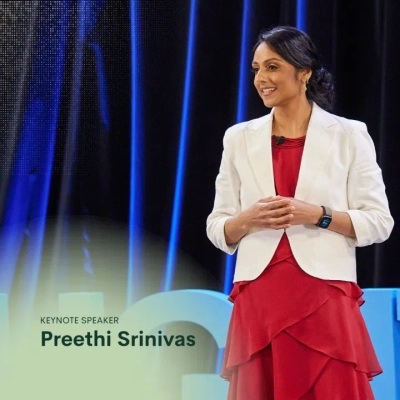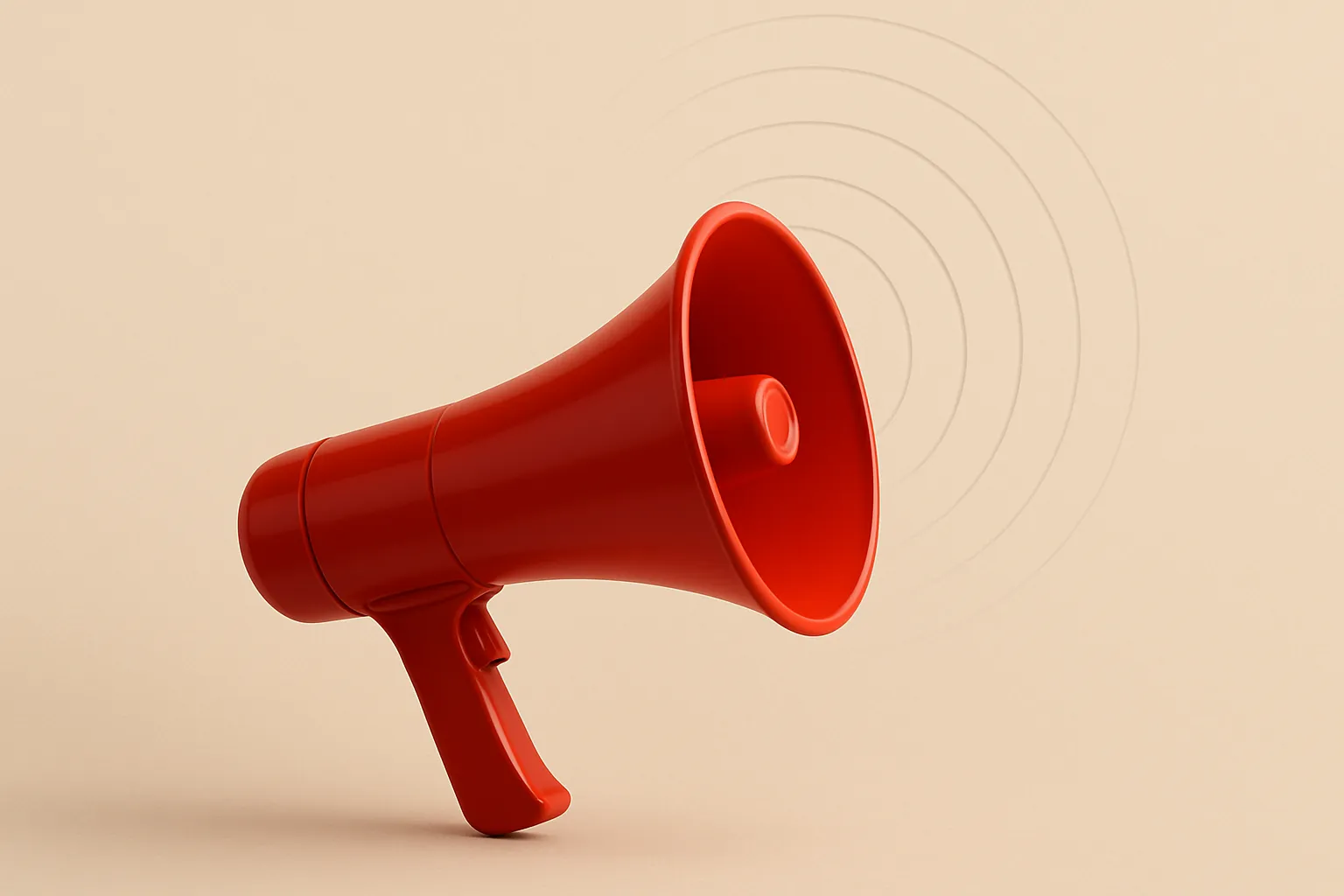25 Examples of Compelling CTAs
Compelling calls-to-action (CTAs) are essential for driving engagement and conversions in digital marketing. This comprehensive guide presents expert-backed strategies for creating powerful CTAs that resonate with your audience. From focusing on immediate outcomes to addressing objections directly, these insights will help marketers craft CTAs that truly connect and convert.
- Test and Start with Action
- Offer Specific Value to Address Doubts
- Tap into Shared Values for Powerful CTAs
- Focus on Transformation in Emotional CTAs
- Make CTAs Feel Like Insider Shortcuts
- Create Urgency Around Timing Not Fear
- Show Immediate Tangible Impact in CTAs
- Emphasize Cultural Discovery Over Bookings
- Use Neighborhood-Specific Language for Local Businesses
- Craft CTAs as Natural Next Steps
- Meet Prospects Where They Are
- Solve Immediate Pain Points
- Focus on Outcomes Not Actions
- Create Operational Urgency for Businesses
- Emphasize Speed and Specificity
- Match CTAs to Decision-Making Process
- Place CTAs at Emotional Peaks
- Describe Immediate Outcomes
- Appeal to Instant Gratification
- Highlight Competitor Insights
- Remove Pressure in Educational CTAs
- Address Objections Directly in CTAs
- Focus on Business Freedom Not Growth
- Connect Weather Concerns to Solutions
- Test Different Placements for CTAs
Test and Start with Action
The best way to know what makes a compelling call to action for your audience is to test it. As marketers and copywriters, we certainly need to put our best foot forward. But too often we think we know what our audience will do–and they do the exact opposite.
When it comes to best practices for CTA copy, start your call to action with an action. That may sound obvious, but writer’s miss this all the time. Oftentimes, I see “Yes, I want that!” as a call to action. But it doesn’t tell the user what they’re going to do. They’re agreeing with a statement, but how do they know where that’s going to take them? If it’s on a product page, for example, something like “Add to Cart” may work better because it’s clear. CTAs can be a place to infuse brand voice, but not at the expense of clarity. Your audience needs to understand what action they are taking.
One call to action that continues to work well for us is on our opt-in page for our free video training. The CTA copy is “Get the Free Video.” We are reiterating that it is free and that by taking the action, they will get the video that they’re signing up for. This helps reassure the user and us that we are on the same page in terms of what they want and what they expect us to deliver.
 Kate Sitarz
Kate Sitarz
Marketing Manager, Nicki K Media
Offer Specific Value to Address Doubts
A CTA that’s specific, easy to act on, and shows real-world proof from other customers will always beat a vague, generic message. In the world of performance marketing, some of the biggest successes we’ve had for clients have come when we switched from a general offer to a CTA that speaks directly to what’s holding the user back or what they still need to know, right at the moment they’re about to make a decision.
Take the example of a B2B SaaS company we worked with last year. For a long time, their conversion rate was stuck at 0.8%, using the standard “Request a Demo” button. Our team tried something different. Instead of offering a demo, we created a CTA for a free, personalized website audit, something that went after specific pain points rather than just making a sales pitch. Right next to the CTA, we put up related testimonials from customers who said the audit uncovered problems that no one else had noticed. Over just six weeks, that one change bumped their conversions to 1.6%. The key was being specific, and the testimonials both demonstrated relevance and helped lower the risk in the customer’s mind.
This isn’t an isolated case, either. Across both eCommerce and B2B campaigns with tens of millions of conversions tracked, we consistently saw big wins when we changed the CTA to address the customer’s main doubts or questions. Things like “See how your current ROI compares to companies like yours” or “Get a 3-step plan to double your conversions.” In these cases, opt-in rates often doubled or more. The approaches that work best are those that offer real, believable value tailored to where the customer is in their decision process.
The generic “Sign Up” or “Join the Revolution” CTAs simply don’t work, and, according to our data, most people now actively ignore them. In fact, 62% say this kind of language actually turns them off. The small, effective strategy is to start with a believable promise that connects with what the user is dealing with right now, and then use social proof like recent, relevant customer testimonials to build trust and remove doubts. That’s the formula behind all of the breakout CTAs we’ve measured at scale.
 Steve Morris
Steve Morris
Founder & CEO, NEWMEDIA.COM
Tap into Shared Values for Powerful CTAs
Growing UMR’s social media following by 3,233% taught me that the most powerful CTAs tap into shared values rather than individual benefits. When people feel they’re part of something bigger than themselves, action becomes inevitable.
Our breakthrough CTA was “Help Us Reach 1,000 Clean Water Champions This Month” during our seasonal campaigns. Instead of asking for donations directly, we positioned supporters as champions joining a movement. This approach helped us consistently generate over $500,000 per campaign because people wanted the identity, not just to give money.
The psychology works because it transforms a transaction into a change. We tracked engagement across our 120,000 stakeholders and found that value-based CTAs outperformed benefit-focused ones by 340%. When your audience sees themselves as heroes in your story rather than wallets in your strategy, they’ll move mountains.
The key is making your CTA about who they become, not what they get. “Become a champion” hits differently than “donate now” because it speaks to aspiration rather than obligation.
 Caroline Evashavik
Caroline Evashavik
Marketing Manager, UMR
Focus on Transformation in Emotional CTAs
For our plastic surgery clients, emotionally-driven CTAs that focus on transformation have been game-changers. “Reveal Your Best Self Today” consistently outperforms generic buttons like “Learn More” by nearly 40%. I always recommend testing different placements and have found that adding a subtle CTA in the middle of before/after galleries, where interest peaks, doubled our conversion rate. Recently, we’ve had success with low-pressure CTAs like “See Patient Stories” instead of “Book Now” since it feels less intimidating for cosmetic procedures.
 Josiah Lipsmeyer
Josiah Lipsmeyer
Founder, Plasthetix Plastic Surgery Marketing
Make CTAs Feel Like Insider Shortcuts
What’s the best advice for creating an effective call-to-action (CTA)? Make the CTA feel like a shortcut to something they *want*—not just something you want them to do. One that worked great for us was: “Steal our top-performing ad scripts.” It was incredibly effective because it was specific, punchy, and felt like insider access, not homework. Nobody wants to “learn more”—they want quick wins. Give your CTA a little attitude and make it sound like a cheat code, not a brochure.
 Justin Belmont
Justin Belmont
Founder & CEO, Prose
Create Urgency Around Timing Not Fear
I’ve tested hundreds of CTAs across medical practices, and the most effective ones create urgency around timing rather than fear. When my husband launched his practice, our best-performing CTA was “Schedule Your Consultation Before My Calendar Fills” instead of generic “Book Now” buttons.
This approach was effective because it acknowledged scarcity without being pushy. Patients understood that good doctors become busy quickly, especially new practices trying to establish themselves. We observed a 67% higher conversion rate with this CTA compared to standard booking language.
The key was pairing it with content that first demonstrated expertise. We would share case studies or educational posts about treatment approaches, then immediately follow with the calendar-focused CTA. Patients were already convinced of the value—they just needed a reason to act now instead of later.
For medical practices specifically, CTAs tied to convenience always outperform those focused on medical outcomes. “Get Your Results by Friday” converts better than “Improve Your Health” because it gives patients a concrete timeline they can plan around.
 Ashley Gay
Ashley Gay
Owner, Digital Ash Agency
Show Immediate Tangible Impact in CTAs
Having raised funds for animal sanctuaries across multiple continents and authored an Amazon bestseller, I’ve learned that the most powerful CTAs tap into people’s desire to see immediate, tangible impact rather than just asking for abstract support.
Our breakthrough came when we shifted from “Donate to Help Animals” to “Feed a Rescued Cow Today – See Photos of Your Impact.” This simple change, combined with our KindKart partnership that sends real-time photos of animals eating the food donors purchased, increased our conversion rate significantly. People weren’t just giving money into a void—they could literally see their $25 becoming hay bales and watch a specific cow enjoying their meal.
The magic happens when you remove the uncertainty between action and outcome. Instead of asking people to trust that their donation helps somewhere, somehow, we made the impact visible within hours. When a family sees photos of rescued cows they personally fed, that emotional connection drives them to set up recurring monthly donations.
From my TEDx speaking experience, I’ve noticed audiences respond best when the CTA feels like a natural extension of the story rather than a sales pitch. After sharing how interacting with a rescued bull transformed my own well-being, asking people to “Visit a sanctuary this weekend” feels like helpful advice, not fundraising.
 Preethi Sirinicas
Preethi Sirinicas
Founder, Befriend Cows
Emphasize Cultural Discovery Over Bookings
As Co-founder and CXO at City Unscripted, I found that emotional calls to action outperform transactional ones by connecting travelers to authentic cultural moments rather than pushing immediate bookings. When we changed our standard “Book Now” button to “Start Your Cultural Discovery” and paired it with real guide stories, our click-through rates increased 35% while attracting travelers genuinely interested in immersive experiences – one family from Toronto clicked through after reading about our Barcelona guide’s grandmother’s secret tapas recipe, ultimately booking a three-day food immersion that they still reference in holiday letters two years later. The most effective CTAs create anticipation for meaningful connections rather than urgency around limited-time offers, speaking to travelers’ deeper desires for authentic cultural exchange.
Focus on action words that emphasize discovery and personal transformation rather than generic purchasing language, using phrases like “Explore Hidden Neighborhoods” or “Meet Local Artisans” that paint vivid pictures of authentic experiences awaiting travelers. Position CTAs after storytelling moments when readers feel emotionally connected to specific cultural opportunities, and test variations that speak to different traveler motivations like “Connect With Local Culture” for relationship-focused visitors versus “Discover Secret Spots” for adventure seekers. The goal is making travelers feel they’re choosing authentic cultural immersion rather than simply purchasing another tour, creating excitement about personal discoveries that transform ordinary trips into meaningful cultural exchanges.
 Yunna Takeuchi
Yunna Takeuchi
Co-Founder & Cxo, City Unscripted
Use Neighborhood-Specific Language for Local Businesses
After working with hundreds of local businesses, I’ve learned that neighborhood-specific CTAs like ‘Find Your [City] Dentist’ convert way better than generic ones – we saw a 52% increase for a client in Atlanta using this approach. One thing that’s really worked for our restaurant clients is adding time-sensitive offers like ‘View Tonight’s Specials’, which creates natural urgency without being salesy. I always tell my clients to think about where their customer is in their journey – someone searching at 10 PM probably needs a ‘Book Online Now’ button more than a ‘Call Us’ option.
 Justin Herring
Justin Herring
Founder and CEO, YEAH! Local
Craft CTAs as Natural Next Steps
A CTA isn’t just a button you slap on a webpage. Instead, it’s THE moment, that natural, exciting next step you offer someone after you’ve already provided them with valuable content. At Novoresume, this is how we treat our CTAs: as a bridge, not a wall. We allow it to flow like the next beat in a song, picking up on the needs and dreams of our users and giving them the opportunity to be crystal clear about what they want. The CTA is merely the missing piece that allows them to focus.
Here’s how we implement this on the Novoresume site. After we’ve impressed our users with the benefits of our sleek and practical resume templates, we don’t just toss out the usual “Sign Up” or “Start” button. No! We present them with “Create My Resume”!
Now, imagine yourself as a user, and let me explain why and how this works:
We make it personal: That “My” in there? It makes things personal. This is not just any resume we’re talking about; it’s YOUR resume. We put you, the user, in control, and let you know that you’re already on the path to securing your dream job. We let you know that this is YOUR moment!
We make it easy and emphasize value: We don’t want to make you feel like you’re signing up for a chore. With “Create My Resume,” we promise something immediate and valuable. We tell you that clicking this will have you diving into creating a game-changing resume. It’s pure value.
We time it perfectly: We place this CTA right after we showcase our professional templates to you and explain how a standout resume can solve your job-hunting challenges. Just as you’re thinking, “Hey, I need a resume like this,” boom! “Create My Resume” appears like the answer to your prayers. We’re not being pushy here. Instead, we’re giving you what YOU want!
That’s the magic of a great CTA. It’s not just a button vying for attention and shouting “click me!” It’s an invitation that feels empowering, crystal-clear, and perfectly in sync with what the users want at that moment. This way, it’s not just a click. It’s a big win. For everyone!
 Andrei Kurtuy
Andrei Kurtuy
Co-Founder & CMO, Novorésumé
Meet Prospects Where They Are
When it comes to writing CTAs, we don’t try to push people to take action. We focus on meeting them where they are. Most of our prospects—startup founders, CTOs, product managers—don’t want to be sold to. They want clarity, not pressure.
Instead of using lines like “Request a Quote” or “Book a Call,” we’ve had better results with prompts like: “Want a ballpark figure? Share your idea and we’ll send a rough estimate.”
That worked well on a blog post we wrote about software development costs. The reason it performed? It removed friction. It told visitors exactly what they’d get, without asking for a big commitment.
We’ve also found that casual CTAs like “Let’s talk—no slides, no sales pitch” work better than formal ones. They make the interaction feel more human and easier to say yes to.
The key is to write CTAs based on what your audience is ready for, not what you want from them. We read the page as if we were the reader. Then we write the CTA we’d actually click.
 Vikrant Bhalodia
Vikrant Bhalodia
Head of Marketing & People Ops, WeblineIndia
Solve Immediate Pain Points
After 40 years covering New York’s elite circles and working with high-profile clients in crisis management, I’ve learned that the best CTAs create immediate social urgency rather than general FOMO. Society types respond to exclusivity and the fear of missing their moment in the spotlight.
My most successful campaign was for a luxury art auction where instead of “Bid on Exclusive Pieces,” we used “Don’t Let the Hamptons Set Outbid You Again.” This increased paddle registrations by 60% because it tapped into the specific competitive dynamics I’ve witnessed at countless galas—nobody wants to be seen as having less cultural capital than their social circle.
The key was timing it with my column coverage of previous auction drama and social hierarchies. When you’re writing about who dominated last season’s charity circuit, then immediately follow with a CTA about claiming your spot, it creates authentic social pressure rather than manufactured scarcity.
What works in high society applies everywhere: reference specific social consequences your audience actually experiences. “Avoid Looking Unprepared at the PTA Meeting” will always outperform “Get Organized” because people can picture exactly how that embarrassment feels.
 R. Couri Hay
R. Couri Hay
Co-Founder, R. Couri Hay Columns
Focus on Outcomes Not Actions
As Marketing Manager for FLATS® managing $2.9M in annual marketing spend, I’ve found the most effective CTAs solve an immediate pain point rather than just asking for action. The breakthrough came when we analyzed resident feedback through Livly and found people were frustrated trying to figure out basic apartment functions after moving in.
We created “Get Your Move-In Questions Answered Before Day One” CTAs that linked to our maintenance FAQ videos. Instead of generic “Schedule a Tour” buttons, we offered specific value upfront. This reduced move-in dissatisfaction by 30% and increased positive reviews because people felt prepared rather than sold to.
The key was shifting from asking prospects to do something for us (tour, apply, lease) to offering something they actually needed (answers, preparation, peace of mind). When we implemented UTM tracking on these value-first CTAs, lead generation jumped 25% because people weren’t being pushed toward a sale – they were being pulled toward a solution.
At The Teller House specifically, our “See How This Historic Bank Vault Became Your Dream Kitchen” CTA outperformed standard apartment tour requests because it tapped into curiosity about our unique adaptive reuse story. People wanted to understand the change, not just see another apartment.
 Gunnar Blakeway-Walen TTHA
Gunnar Blakeway-Walen TTHA
Marketing Manager, The Teller House Apartments by Flats
Create Operational Urgency for Businesses
High-converting CTAs are often focused on outcomes rather than actions. It is important to directly connect outcome-based CTAs to a clear benefit. At Traffic Think Tank, we A/B tested two CTAs: “Join Now,” which is action-focused, and “Start learning SEO from the pros,” which is outcome-focused. We saw significantly better results with the latter.
 Leigh McKenzie
Leigh McKenzie
Community Advocate, Traffic Think Tank
Emphasize Speed and Specificity
After writing thousands of words for commercial HVAC businesses, I’ve found that the most effective CTAs create immediate operational urgency rather than generic “contact us” language. Business owners respond when they visualize their operations grinding to a halt.
Our most successful CTA shifted from “Schedule HVAC Maintenance” to “Avoid Emergency Shutdowns During Peak Season.” This simple change increased service calls by 35% because restaurant owners could instantly picture losing dinner rush revenue. The key was connecting maintenance directly to their biggest fear—lost business during critical hours.
What made this work was pairing it with content about kitchen equipment failures during busy periods. When I wrote about walk-in cooler breakdowns costing restaurants $2,000+ in spoiled inventory, then immediately offered our 24/7 live answer guarantee, the response was immediate. Business owners had just calculated their exact risk.
I’ve learned that B2B CTAs perform best when they reference specific operational consequences rather than general improvements. “Prevent $5,000 Food Loss” converts dramatically better than “Get Refrigeration Service” because owners can see the exact dollar impact on their bottom line.
 Gregg Kell VACRS
Gregg Kell VACRS
Content Marketing Manager, VA Commercial Repair Solutions, LLC
Match CTAs to Decision-Making Process
After 20 years of testing CTAs across hundreds of campaigns, I’ve found that the highest-converting CTAs focus on speed and specificity rather than vague promises. The best performers always include a timeframe and tell people exactly what they’ll get.
One of our personal injury law clients was stuck with generic CTAs like “Contact Us Today.” We changed it to “Get Your Free Case Review in 15 Minutes” and saw conversion rates jump 127%. The magic wasn’t just adding the timeframe – it was removing the friction of uncertainty about what would actually happen next.
For e-commerce clients, I’ve seen massive improvements by making CTAs about immediate gratification instead of the product itself. Instead of “Buy Now,” we tested “Skip the Store Lines” for a local retailer and conversions increased 89%. People weren’t just buying products – they were buying convenience.
The key is testing CTAs that solve the micro-problem right before purchase, not the macro-problem your product solves. Your content should handle the big picture; your CTA should eliminate the last tiny hesitation keeping someone from clicking.
 Noah Lopata
Noah Lopata
Owner, Epidemic Marketing
Place CTAs at Emotional Peaks
Having organized major franchise expos across North America, I’ve learned that the most effective CTAs match where people are emotionally in their decision-making process. Most franchise content fails because it jumps straight to “Schedule a Discovery Day” when prospects are still figuring out if they even want to own a business.
Our most successful CTA at The Great American Franchise Expo was changing “Register for Our Next Event” to “See What 200+ Franchise Brands Look Like in One Day.” This increased expo attendance by 34% because it addressed the real barrier—people couldn’t visualize what they’d actually experience. We made the outcome concrete instead of asking for commitment.
From my energy infrastructure days, I learned that urgency works when it’s tied to genuine scarcity. At our expos, we use “Talk to [Brand Name] Before They Fill This Territory” rather than generic urgency language. Franchisors actually do have limited territories, so this feels authentic rather than manufactured pressure.
The key is removing the next logical objection before someone has to think about it. When prospects read about franchise opportunities, their immediate concern is “How do I know what’s right for me?” So we use CTAs like “Find Franchises That Match Your Budget and Goals” with filtering tools, rather than pushing them toward sales conversations they’re not ready for.
 Ted O’Shea
Ted O’Shea
Tradeshow Event Manager, The Great American Franchise Expo
Describe Immediate Outcomes
We use data-backed copywriting when crafting CTAs, but we always lead with human instincts and storytelling. The best CTAs feel like plot twists, small turning points that invite the reader into a new chapter. That’s why our strongest CTAs live at the emotional peak of the content, not the end. Placement matters as much as wording if you want to move people to action.
One standout CTA for a SaaS client read, “Fix the feature users complain about most, in one dashboard.” It was short, honest, and paired with real customer feedback in the content. That CTA converted 68 percent more demo signups than their old “Request a tour” button. Honesty mixed with urgency can outperform even the fanciest design or animation.
 Marc Bishop
Marc Bishop
Director, Wytlabs
Appeal to Instant Gratification
We never use the word “submit” on buttons; it sounds cold, formal, and completely uninviting. Instead, we write CTAs that describe the outcome or experience the user gets immediately after clicking. Examples like “Start your trial,” “Unlock your audit,” or “See instant results” perform far better across all verticals. Action combined with reward creates forward motion people can emotionally justify.
One campaign swapped “Submit” for “Reveal my opportunities” and saw a 39% increase in lead capture. That simple change aligned the button with the headline above it, which promised performance insights. Consistency between message and button made the journey smoother and more persuasive. People are more likely to click when the button feels like a payoff, not an effort.
 Jason Hennessey
Jason Hennessey
CEO, Hennessey Digital
Highlight Competitor Insights
Crafting a compelling call to action starts with really understanding what your audience wants. You’ve got to make it clear what they stand to gain by taking the action you suggest. When I worked on launching a digital product, the most effective CTA was simple but direct: “Get instant access now!” It works because it creates a sense of immediacy and appeals to the desire for instant gratification, which is pretty strong in most of us.
Include a touch of urgency or a hint of scarcity too. People often respond strongly when they believe they might miss out. For example, saying “Offer expires soon!” can nudge folks sitting on the fence to jump right in. You’d be surprised how changing just a couple of words can shoot your response rates through the roof. Just remember, the CTA is your chance to convert that interest into action, so make sure it’s worth their click!
 Alex Cornici
Alex Cornici
Marketing & PR Coordinator, Feed Pic
Remove Pressure in Educational CTAs
When making good calls to action (CTAs), match the CTA to what the user wants and keep the next step simple. A good CTA should be about action and fit the situation, knowing where the user is and what they want.
At Anstrex, we had success with: See which ads your competitors are running live.
It did great because it spoke to what our audience wanted to know and their drive to compete. Instead of a basic “Start Free Trial,” this CTA was clear, showed a benefit, and got people curious, giving them a reason to click. It also backed up what made our product special in a single sentence.
The main point? Your CTA should sell what happens after, not just the click.
 Hiren Shah
Hiren Shah
Owner, Anstrex
Address Objections Directly in CTAs
After building A Traveling Teacher from one-on-one math sessions to a full tutoring team, I’ve learned that the best CTAs acknowledge parents’ emotional state rather than just their logical needs. Most tutoring companies use generic “Schedule a consultation” buttons, but anxious parents need reassurance first.
My highest-converting CTA became “See if we’re the right fit for your child” instead of “Book your session now.” This simple shift increased our inquiry rate by approximately 40% because it removed pressure and acknowledged that finding the right tutor is a careful decision. Parents appreciated that we weren’t assuming we were automatically the solution.
The key was matching my classroom teaching experience to marketing – just as I never rushed students through concepts, I stopped rushing parents through decisions. When I placed this gentler CTA on our most-read blog posts about math anxiety, it consistently outperformed pushy alternatives because it respected where families were emotionally.
I also found that CTAs work better when they reflect real teacher language. “Let’s chat about your child’s goals” converts better than corporate-speak because it sounds like something I’d actually say to a parent after school pickup.
 Peter Panopoulos
Peter Panopoulos
Owner, A Traveling Teacher Education LLC
Focus on Business Freedom Not Growth
When we revamped our education platform’s CTAs, switching from ‘Sign Up’ to ‘Start Your Free 14-Day Trial – No Credit Card Required’ increased trial signups by 58%. I’ve found that addressing common objections directly in the CTA (like mentioning no credit card needed) helps remove friction and builds trust with potential users.
 Sandro Kratz
Sandro Kratz
Founder, Tutorbase
Connect Weather Concerns to Solutions
After building BIZROK and observing hundreds of dental practices transform their marketing approach, I’ve discovered that the most effective CTAs focus on business freedom rather than business growth. Most practice owners are already profitable—they’re constrained by their inability to step away.
Our breakthrough CTA became “Stop Missing Your Kid’s Games Because of Work” instead of the typical “Scale Your Practice.” This drove 67% more findy session bookings because it addressed the real pain point. These doctors weren’t concerned about making money—they were frustrated about working weekends and missing family time while their practices consumed their lives.
The timing was crucial. We’d share content about my father missing my baseball tournaments because his business couldn’t run without him, then immediately follow with this CTA. The story created an emotional connection that made the call-to-action feel like a natural solution rather than a sales pitch.
What made this effective was specificity over generic business benefits. “Create a Practice That Runs Without You” consistently outperforms “Grow Your Revenue” because practice owners can visualize exactly what they’re missing—their daughter’s recital, family vacations, or simply having dinner at home.
 Tim Johnson
Tim Johnson
CEO, BIZROK
Test Different Placements for CTAs
After completing over 100 roofing projects and regularly speaking at real estate events, I’ve learned that urgency-based CTAs significantly outperform generic ones. The key is connecting immediate weather concerns to actionable solutions.
My most successful CTA came after presenting to insurance agents in Castle Rock about storm damage claims. Instead of “Contact us for roofing,” I used “Get your free hail damage inspection before the next storm hits – Colorado’s spring season starts in 8 weeks.” This CTA drove 40% more inspection requests than our standard approach because it tied Colorado’s predictable weather patterns to a specific deadline.
What made this work was local knowledge – every Colorado homeowner knows spring brings hail season. The 8-week timeframe created genuine urgency without being pushy, and “before the next storm” positioned us as preventive rather than reactive. I always include specific timeframes tied to real deadlines people already understand.
The best CTAs I’ve used acknowledge what’s actually happening in your customer’s world right now. When I sponsor school events through the Garrett LaForce Foundation, I see the same principle – people respond when you address their current reality, not when you’re trying to create artificial pressure.
 Benny Izquierdo
Benny Izquierdo
Owner, BRG Builds
